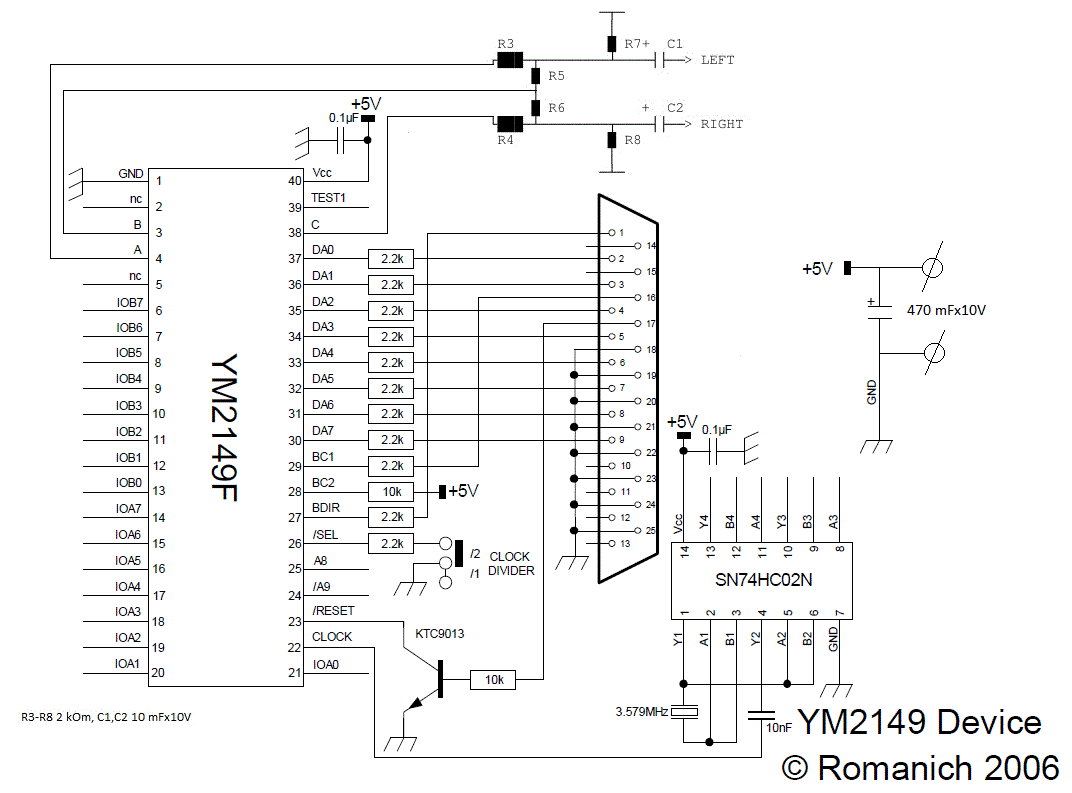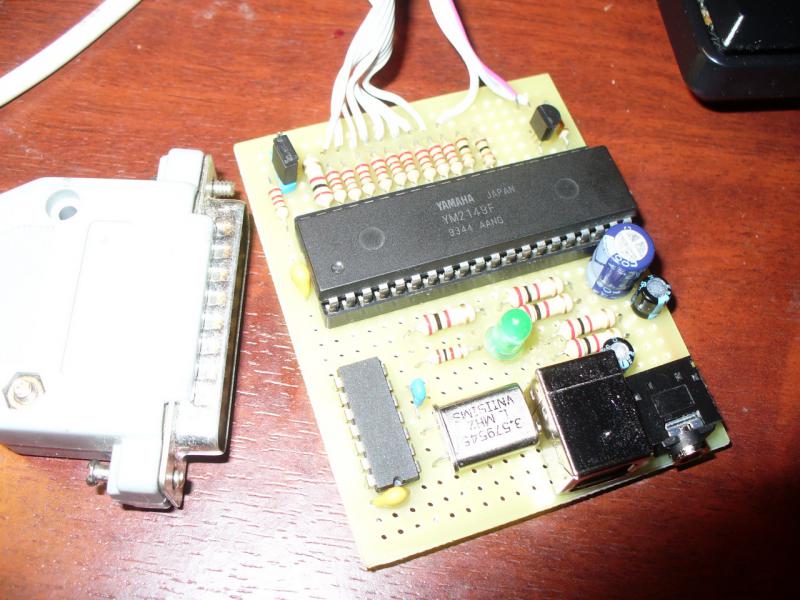286/386/486 Demoscene
category: general [glöplog]
(In the absence of an edit feature, I'll just add a new post)
Why do I care about the "eras" so much? Maybe it's because on the old PC side, it feels sort of like making stuff for an audience that once existed. Very few people have actual working 286/386/486 setups anymore, not to mention 8086. And making things for an "emulator scene" feels stupid.
If you compare to other scenes like C64, Amiga, or MSX for example, there are lots of active people out there with actual working setups. It's not just an emulator + YouTube scene. People use the machines. New components and peripherals are being designed, built and sold for those machines.
On the PC, I remember a particular demoparty some years ago. There was an oldskool compo with PC specd as "386", and I was totally shocked by one demo in the compo, because it ran at a mind blowing framerate. I thought, now this demo is a true work of art and optimization, but later it turned out they had run it on a Pentium. Maybe it was too hard for the organizers to find a working 386?
Why do I care about the "eras" so much? Maybe it's because on the old PC side, it feels sort of like making stuff for an audience that once existed. Very few people have actual working 286/386/486 setups anymore, not to mention 8086. And making things for an "emulator scene" feels stupid.
If you compare to other scenes like C64, Amiga, or MSX for example, there are lots of active people out there with actual working setups. It's not just an emulator + YouTube scene. People use the machines. New components and peripherals are being designed, built and sold for those machines.
On the PC, I remember a particular demoparty some years ago. There was an oldskool compo with PC specd as "386", and I was totally shocked by one demo in the compo, because it ran at a mind blowing framerate. I thought, now this demo is a true work of art and optimization, but later it turned out they had run it on a Pentium. Maybe it was too hard for the organizers to find a working 386?
Well, you could also stick AdLib or GameBlaster into an 8086/8088...
YM-LPT project: uses AY-3-8910 (YM2149F). Sound examples: https://soundcloud.com/tronix286
Scheme:

Device:

Scheme:

Device:

Quote:
As far as I remember, in the 80s, PCs really only had the PC speaker
And Tandy soundchip. That was actually used quite a lot 1985-1990.
The AdLib was introduced in 1987, as was the Creative Music System and the Roland MT-32 (the required MPU-401 interface was already on the market for a while, but it wasn't until the MT-32 that a 'standard' MIDI configuration gained software support). So some people will have had audio interfaces on their PCs in the late 80s.
There were also some more esoteric sound cards around in the 80s, but these three had reasonably widespread support in games.
But the real boom came with the Sound Blaster in the early 90s (the first SB was introduced in 1989).
Then again, even on PC speaker games could do this: http://youtu.be/SETOz7WBfnw
I know there was a really early game I ran in CGA on my XT, which had digitized sound, probably from 1988 or so, but I can't recall the title atm. I vaguely recall that the start screen had some kind of spacecraft, and I think it was some kind of scrolling shoot-em-up. Possibly from a French publisher.
There were also some more esoteric sound cards around in the 80s, but these three had reasonably widespread support in games.
But the real boom came with the Sound Blaster in the early 90s (the first SB was introduced in 1989).
Then again, even on PC speaker games could do this: http://youtu.be/SETOz7WBfnw
I know there was a really early game I ran in CGA on my XT, which had digitized sound, probably from 1988 or so, but I can't recall the title atm. I vaguely recall that the start screen had some kind of spacecraft, and I think it was some kind of scrolling shoot-em-up. Possibly from a French publisher.
Found it, Space Racer:
http://youtu.be/5jkK_AbHLR8
http://youtu.be/M3Ek9-jNF_k
From 1988 indeed.
http://youtu.be/5jkK_AbHLR8
http://youtu.be/M3Ek9-jNF_k
From 1988 indeed.
Oh yea, and its cousin Mach 3 from 1987: http://youtu.be/BGAuOzMC-yw
I think this is actually the one I was thinking of initially.
I think this is actually the one I was thinking of initially.
According to this list, there was 1 game released in 1987 that supported AdLib, 9 in 1988 and 63 in 1989. So yes, I admit, it's plausible. Maybe someone somewhere had 8086+AdLib+CGA... Though I didn't know any. The only machines I ever saw before 1990 that had AdLibs were at my school and they had 286 and EGA or better. But still, wouldn't you rather have upgraded the CGA card to EGA or VGA instead of adding an AdLib? I knew two people who played games with 8086 machines and neither of them had a sound card, and both had EGA or better.
By the way, AdLib themselves must have thought that some of their potential customers use CGA displays, because some of the bundled software uses CGA modes, Visual Composer at least.
By the way, AdLib themselves must have thought that some of their potential customers use CGA displays, because some of the bundled software uses CGA modes, Visual Composer at least.
Please drop the 8086.
There were only VERY few PCs ever sold with an 8086 CPU.
Nearly all early PCs were 8088 (because of the 8-bit bus, requiring only an 8-bit motherboard/chipset, much cheaper).
The 8086 and 80186 are EXTREMELY rare in actual PCs. The general market started with 8088, and moved straight to 80286 when they went 16-bit.
But yes, I would agree that 8088+VGA is more common than 8088+AdLib.
At least, my own 8088 was upgraded with VGA, a HDD and a joystick card, but I never had a sound card in it. My first PC with a soundcard was a 386SX-16, where I got an SB Pro 2.0, which was about as expensive as my Amiga, and didn't sound half as good, but hey. I was the first person in my class at school who had a sound card at all. This would have been in late 1991 or early 1992 I think.
Nevertheless, 8088+VGA+AdLib is a realistic platform for late 80s.
But I personally think that stock 8088+CGA/Hercules and speaker or stock PCjr/Tandy are more interesting platforms to explore. Closer to the idea of stock C64/Amiga 500 platforms, just working inside the limitations.
There were only VERY few PCs ever sold with an 8086 CPU.
Nearly all early PCs were 8088 (because of the 8-bit bus, requiring only an 8-bit motherboard/chipset, much cheaper).
The 8086 and 80186 are EXTREMELY rare in actual PCs. The general market started with 8088, and moved straight to 80286 when they went 16-bit.
But yes, I would agree that 8088+VGA is more common than 8088+AdLib.
At least, my own 8088 was upgraded with VGA, a HDD and a joystick card, but I never had a sound card in it. My first PC with a soundcard was a 386SX-16, where I got an SB Pro 2.0, which was about as expensive as my Amiga, and didn't sound half as good, but hey. I was the first person in my class at school who had a sound card at all. This would have been in late 1991 or early 1992 I think.
Nevertheless, 8088+VGA+AdLib is a realistic platform for late 80s.
But I personally think that stock 8088+CGA/Hercules and speaker or stock PCjr/Tandy are more interesting platforms to explore. Closer to the idea of stock C64/Amiga 500 platforms, just working inside the limitations.
It's all just 8086 to me. 8088 or NEC V20 or V30 or whatever. They're variations of the same original thing, the 8086. It's not a statement about the relative historical popularity of the chips. For example the Amstrad 1640 was a fairly common computer in Finland, and Wikipedia says it had a 8086 CPU. Maybe it didn't? A friend of mine had one and I always thought it was a genuine 8086. Amstrad PPC models were somewhat popular too, and they used NEC V30. I guess you aren't coding for the 8088 specifically? I wonder what special features it has over all other 8086 variants and clones that would justify renaming the whole class of CPUs.
Quote:
It's all just 8086 to me. 8088 or NEC V20 or V30 or whatever. They're variations of the same original thing, the 8086.
When you're doing actual coding on them, there is a difference, because they all have different performance characteristics and require different optimizations and such.
In that sense an 8088 is about as different to an 8086 as it is to a 286.
Which is why Trixter and I specifically talk about 8088 :)
Quote:
For example the Amstrad 1640 was a fairly common computer in Finland, and Wikipedia says it had a 8086 CPU
It probably did, but as I say, they're the exception to the rule.
The original IBM PC, PCjr and XT were 8088-based, as were 99% of all clones out there. IBM never made an 8086-based machine themselves, but moved straight to 286 with the AT series.
As such, chipsets for 8086 were rare as well. Amstrad probably designed and manufactured their own custom chipset, being one of the larger computer brands out there, and already experienced with developing their own CPC line of computers for example.
This is now off topic, but someone has written in Wikipedia that IBM did make 8086 machines, namely PS/2 models 25 and 30.
http://en.wikipedia.org/wiki/Intel_8086#Microcomputers_using_the_8086
The list also confirms my thoughts about the Amstrad PCs. Now that I think about it more, I know at least three people who used to have one of the Amstrad PC models, and one with a semi-portable PPC. Those were probably very rare in the USA.
http://en.wikipedia.org/wiki/Intel_8086#Microcomputers_using_the_8086
The list also confirms my thoughts about the Amstrad PCs. Now that I think about it more, I know at least three people who used to have one of the Amstrad PC models, and one with a semi-portable PPC. Those were probably very rare in the USA.
In Germany, the Schneider 1640 was a pretty popular Amstrad rebrand, running with EGA and 8086.
Although the instruction set is almost the same the speed difference between an 8088 and a V30 running at the same speed is enourmous.
I´ve never heard of a machine running 80188/80186 apart from industry stuff, though.
Regarding CGA + MIDI/AdLib: It is unlikely that such a combination is widspread, supporting both just widened the audience spanning low-end (cga, pc honker) to high-end (ega/vga, sound card).
BTW, Did anyone ever use one of those horribly expensive 80x87 FPUs?
Although the instruction set is almost the same the speed difference between an 8088 and a V30 running at the same speed is enourmous.
I´ve never heard of a machine running 80188/80186 apart from industry stuff, though.
Regarding CGA + MIDI/AdLib: It is unlikely that such a combination is widspread, supporting both just widened the audience spanning low-end (cga, pc honker) to high-end (ega/vga, sound card).
BTW, Did anyone ever use one of those horribly expensive 80x87 FPUs?
yzi,
Which demoparty you were receding to? Just wondering...
Which demoparty you were receding to? Just wondering...
Is there such thing as 16-bit demos and 32-bit demos?
Quote:
I´ve never heard of a machine running 80188/80186 apart from industry stuff, though.
Probably because there's none: the 80186 included some peripheral stuff embedded in the CPU so it didn't have to be added to computers, but that stuff was incompatible with that found in PCs, so it was skipped entirely (and thereby why 80286 dropped that altogether).
While it is correct that IBM used an 8086 in some PS/2 models, these were not PCs, and afaik no other company ever cloned a PS/2 computer (that was the whole point).
They were launched much later than the PC AT 286 models.
They were launched much later than the PC AT 286 models.
Some Nokia MikroMikko 2 model at least had an 80186.
Quote:
Is there such thing as 16-bit demos and 32-bit demos?
I would say that on a technical level there are 3 classes of demos for MS-DOS:
1) Pure 16-bit demos (this includes 8088, since it uses the same 16-bit instruction set as an 8086).
2) Demos that run in 16-bit (real) mode, but use 32-bit registers, so they can only run on 386 and higher.
3) Pure 32-bit demos, running with a DOS extender in 386 protected mode.
But there are special cases such as INTROjr, which is aimed specifically at an 8088-based system. Would you call that an 8-bit demo? Technically it fits in category 1) above, and technically the code is 16-bit, but it is optimized for a machine with an 8-bit bus.
The above classes also don't cover the fact that some 16-bit demos may use 286-specific instructions, and 32-bit demos are often not limited to 386 instructions either.
Quote:
there are 3 classes ...
there are special case ...
also don't cover ...
What's up with trying to categorize everything these days? Isn't the demoscene about pushing things beyond the limits?
The oldschool PC is the one you had at home. For obvious reasons, this being the PC scene, not two sceners had the same machine. If you want that, go with [strike]ZX Spectrum[/strike]... [strike]Amiga[/strike]... maybe C64 or Amstrad CPC are still safe.
Forcer: I don't think it matters and I don't want to point fingers. It just happened and it wasn't anybody's fault. But it tells something about the state of the scene.
Quote:
Isn't the demoscene about pushing things beyond the limits?
Which is exactly the reason why you want categories to define these limits.
Categories don't help much on the PC scene. PC specs have always been a moving target, continuously sliding window. Check the compo machine specs at various parties between 1990-2010. I think compo machine specs tell much more than "bitness".
I know how the PC scene used to work, I was there the whole time.
Thing is, not a whole lot of 16-bit productions were released, and even less targeting 8088-based machines.
Which is what some of us would like to change.
Anything 32-bit is incredibly boring anyway. And 16-bit is only fun when it is aimed at actual 16-bit machines, rather than just 16-bit code, but requiring a CPU so fast that only 32-bit machines are an option.
Thing is, not a whole lot of 16-bit productions were released, and even less targeting 8088-based machines.
Which is what some of us would like to change.
Anything 32-bit is incredibly boring anyway. And 16-bit is only fun when it is aimed at actual 16-bit machines, rather than just 16-bit code, but requiring a CPU so fast that only 32-bit machines are an option.
Alone_Coder: yes, you can't run a 32-bit compiled executable on a 16-bit platform. on pouet there's no easy way to search for such specific categories. you would rather deduce a platform manually to find the specific cpu(s) or gpu(s) it supports. for example Sega mega drive has a 16-bit microprocessor which only run 16-bit demos, not demos that supports 32-bit instructions for 32-bit processors.
